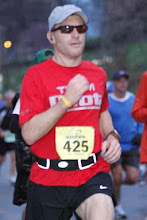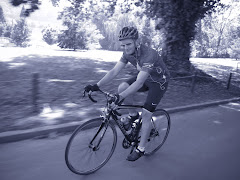Jan 22- run 3
jan 23 - run 3, swim 2,600
jan 24 - cycle 20
jan 26 - swim 2,000, cycle 30
jan 27- run 3, cycle 18
jan 28 - run 4, swim 2,400, cycle 30

I think this article sums up this post.
Power-to-Weight: Cycling and Body Image in a World Where Skinny Rules
By: Katie Lambden (View Profile)
Cycling, as far as I know, is the only community in which men appear to obsess more over their weight than women do. The first time I heard a male member of the spandex set complaining how big his butt was this season, I almost laughed, thinking he had to be joking. Thank goodness I didn’t, since he was totally, unhappily, serious.There are all kinds of body types in men’s professional cycling, but it’s true that most of them are on the skinny side. There’s tall and twiggy (your all-arounders and classics riders), and short and twiggy (your climbers and stage racers, mostly). Even the sprinters, who look stocky compared to the rest of the riders, are shockingly thin in reality. I recently met Mario Cipollini, a decorated sprinter who always looked enormous and lion-like on video compared to his teammates; in person he is tall (six feet and three inches) but incredibly narrow-shouldered and lanky; in his prime, he was only 167 pounds! Essentially, long hours of training burn so many calories that body fat drops to under maybe 5 percent. Extra weight, at any event, only holds a cyclist back when the road goes uphill. The magic mantra is the power-to-weight ratio: the more power you can produce, and the less you weigh, the faster you will climb. Of course this is only true to a certain extent: lose too much body mass, and you will rapidly lose power too, resulting in a lower power-to-weight ratio.
When you're familiar with athletes in most conventional sports, it's a shock to see how small and thin top cyclists are. The rule for climbing prowess: You should weigh (in pounds) no more than twice your height in inches. So at 6 feet (72 inches) you'd need to weigh 144 pounds rather than 190. Pro cycling tends to select lean, light-bodied athletes in the same way that the profile of a mastodon is required for football linemen. Climbing ability is crucial in racing, and it depends on the power-to-weight ratio. A light rider doesn't need to generate as much power as his heavier competitor because he has less weight to propel up hills. In the 2005 Tour de France with 189 starters, here's the profile of the average rider:
Height -- 1.79 meters (5 feet, 10.4 inches) I am 5 feet , 9 inches
Weight -- 71 kilograms (156.2 pounds) Today I am 157.8 lbs
Resting heart rate -- 50 bpm My resting heart rate is 52 bpm
Lung capacity -- 5.69 liters (1.48 gallons) I have no idea what my lung capacity is
Of course, there are exceptions. Five-time Tour winner Miguel Indurain is 6-foot-2 and weighed 190 pounds when he began racing. Lots of miles reduced him to 175. At that weight, his huge power output enabled him to ride with the specialist climbers in the mountains even though he outweighed most of them by 30-40 pounds. And of course he was nearly unbeatable in flat time trials where weight doesn't matter much but power output does. Think of Big Mig and don't give up hope for climbing well. Continue riding, train on hills and you'll improve to the limits of your physique.
As you can see the question is how low should I go? I am still shedding body fat, and do not feel like I have given up any power. I will be having my body fat measured in late Feb. I wonder if I will be sub 10%? Only warm weather and time on the rode will tell if I am still gaining power. I need to get in a good hard 100k and see what type of time I can post. It has been a while since I have rode a 100k. We usually go longer. can't wait sounds like Big B, Phelps and at least myself are going for a ride on Sunday. This will enable me to indulge in some Superbowl suds! Go Steelers!!! Sphere: Related Content





I'm your first official blog follower..BOOOOYYYAA!
ReplyDelete